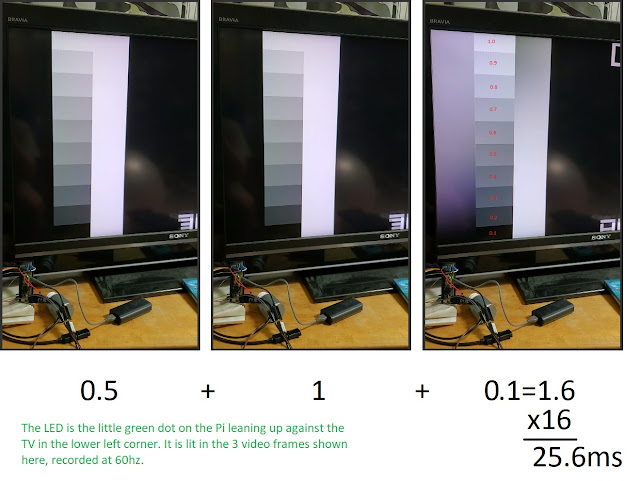Wiring the OSSC for DIY lag testing photodiode
The OSSC has an official DIY mod to make it able to measure input lag. It involves replacing a surface mounted resistor on the bottom of the board and adding a photodiode to one of the button circuits. It's a bit hairy to work with one of those tiny surface mounted resistors. Here's some photos, with explanatory text above each photo.
After soldering you can measure at these two points to make sure that you have continuity to the button. It should show the resistance of the resistor you placed on the board. NOTE: this is the before photo, so everything looks nice and clean! You can swap the black lead to the other leg of the button to complete the continuity check, it should show about 1kohm. Best to practice this before you do the soldering so you can convince yourself you've found good test points.

Below is the after photo. Ugly as sin, but it worked. I put some tape over the circuits I wasn't going to solder so that if the board got too hot nothing would wander.

The surface mounted component is the only tricky part, really. But I was somewhat pleased how I wired up the photodiode to the board in such a way that it couldn't get (easily) ripped from the solder points.
I chose to solder to the bottom of the board, and wrap a bit of electrical tape around the speaker wire I was using to make it bulky enough.

Then I sandwiched it between the board and the bottom cover of the OSSC. The electrical tape made it snug.

In practice I'm not that satisfied with the lag tester, because it's a binary threshold device with no sensitivity control. If your TV is too bright it will respond to the backlight, and if it's too dark it won't respond to the probe. Meanwhile the lag values reported depend on which of the two extremes characterizes your display; if it's bright the trigger will happen on the very early rise in brightness, and if it's dark it will trigger only after the display has fully reached max brightness. The difference could be a couple frames, unless you are using an OLED or some other display technology with no rise time. BUT: for the effort and cost it's a pretty neat addon if you already own an OSSC. I would suggest the schematics/manufacturing be changed so that the resistor doesn't even need to be swapped out, which would leave the photodiode attachment as the only DIY aspect of this mod, which is the easier half by far.
After soldering you can measure at these two points to make sure that you have continuity to the button. It should show the resistance of the resistor you placed on the board. NOTE: this is the before photo, so everything looks nice and clean! You can swap the black lead to the other leg of the button to complete the continuity check, it should show about 1kohm. Best to practice this before you do the soldering so you can convince yourself you've found good test points.

Below is the after photo. Ugly as sin, but it worked. I put some tape over the circuits I wasn't going to solder so that if the board got too hot nothing would wander.

The surface mounted component is the only tricky part, really. But I was somewhat pleased how I wired up the photodiode to the board in such a way that it couldn't get (easily) ripped from the solder points.
I chose to solder to the bottom of the board, and wrap a bit of electrical tape around the speaker wire I was using to make it bulky enough.

Then I sandwiched it between the board and the bottom cover of the OSSC. The electrical tape made it snug.

In practice I'm not that satisfied with the lag tester, because it's a binary threshold device with no sensitivity control. If your TV is too bright it will respond to the backlight, and if it's too dark it won't respond to the probe. Meanwhile the lag values reported depend on which of the two extremes characterizes your display; if it's bright the trigger will happen on the very early rise in brightness, and if it's dark it will trigger only after the display has fully reached max brightness. The difference could be a couple frames, unless you are using an OLED or some other display technology with no rise time. BUT: for the effort and cost it's a pretty neat addon if you already own an OSSC. I would suggest the schematics/manufacturing be changed so that the resistor doesn't even need to be swapped out, which would leave the photodiode attachment as the only DIY aspect of this mod, which is the easier half by far.



Comments